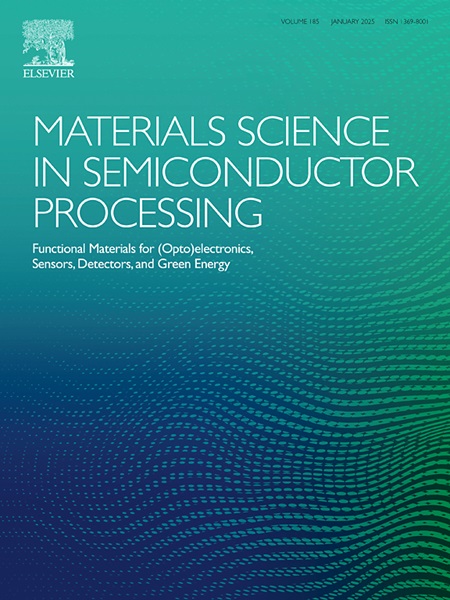Structural, morphological, optical, and electrochemical properties of Zn-doped CeO2/rGO nanocomposites
IF 4.2
3区 工程技术
Q2 ENGINEERING, ELECTRICAL & ELECTRONIC
引用次数: 0
Abstract
Metal-doped cerium oxide has recently attracted the interest of researchers worldwide because of its various applications in different fields such as supercapacitors, high-sensitivity electrodes or photocatalytic. Metal-doped cerium oxide can be improved utilizing a variety of metals and composites with enhanced conductivity, which advances materials science in semiconductor processing. In this study, undoped and Zn-doped CeO2 nanoparticles at 5, 10, 15, and 20 at.% were reacted with reduced graphene oxide (rGO) using a hydrothermal method. They were heated at 150 °C for 12 h and then processed in an ultrasonic reactor (20 kHz) at 25 ± 1 °C. Their structural, morphological, elemental, optical, and electrochemical properties were systematically characterized. The calculated average crystallite sizes of CeO2 peaks ranged from 4.60 ± 0.2 to 12.0 ± 0.4 nm. These samples exhibited a single CeO2 phase corresponding to a face-centered cubic structure, except for 20 at.% Zn-doped CeO2/rGO, which presented a ZnO phase. The samples had lower band gap values than expected for undoped CeO2 nanoparticles, higher valence states due to their Ce3+/Ce4+ ratios, and a large surface area, 242 m2/g, due to Zn-doping in CeO2 samples. The highest specific capacitance values achieved were 88.49 F/g at 5 mV/s and 134.01 F/g at 0.5 A/g for undoped CeO2/rGO. Zn-doping resulted in decreased capacitive behavior with specific capacitance values in the range of 70.78–81.00 F/g at 5 mV/s and 79.24–101.43 F/g at 0.5 A/g. This study for synthesizing Zn/CeO2/rGO ternary nanocomposites produced materials with improved band gaps, valence states of Ce3+/Ce4+ ratios, and greater surface area for improved electrocatalytic performance.
求助全文
约1分钟内获得全文
求助全文
来源期刊

Materials Science in Semiconductor Processing
工程技术-材料科学:综合
CiteScore
8.00
自引率
4.90%
发文量
780
审稿时长
42 days
期刊介绍:
Materials Science in Semiconductor Processing provides a unique forum for the discussion of novel processing, applications and theoretical studies of functional materials and devices for (opto)electronics, sensors, detectors, biotechnology and green energy.
Each issue will aim to provide a snapshot of current insights, new achievements, breakthroughs and future trends in such diverse fields as microelectronics, energy conversion and storage, communications, biotechnology, (photo)catalysis, nano- and thin-film technology, hybrid and composite materials, chemical processing, vapor-phase deposition, device fabrication, and modelling, which are the backbone of advanced semiconductor processing and applications.
Coverage will include: advanced lithography for submicron devices; etching and related topics; ion implantation; damage evolution and related issues; plasma and thermal CVD; rapid thermal processing; advanced metallization and interconnect schemes; thin dielectric layers, oxidation; sol-gel processing; chemical bath and (electro)chemical deposition; compound semiconductor processing; new non-oxide materials and their applications; (macro)molecular and hybrid materials; molecular dynamics, ab-initio methods, Monte Carlo, etc.; new materials and processes for discrete and integrated circuits; magnetic materials and spintronics; heterostructures and quantum devices; engineering of the electrical and optical properties of semiconductors; crystal growth mechanisms; reliability, defect density, intrinsic impurities and defects.
 求助内容:
求助内容: 应助结果提醒方式:
应助结果提醒方式:


